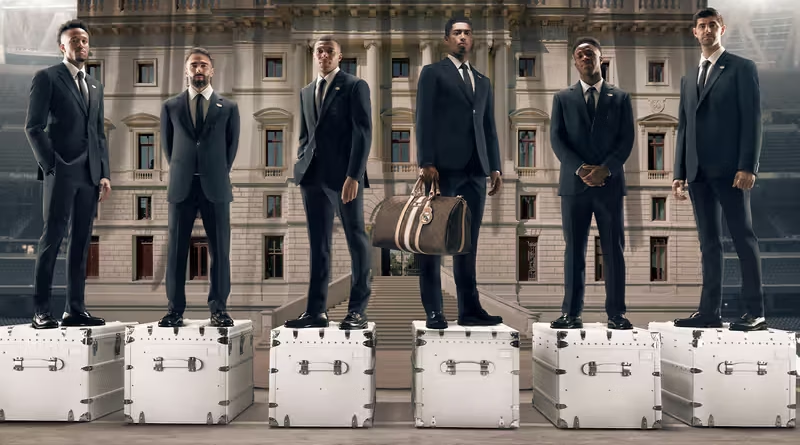The Era of High Fashion Entering the Stadium: A New Sports Culture Where Luxury Brands and Sports Intersect
In recent years, luxury brands have actively expanded beyond the realm of fashion to engage with the sports arena. Louis Vuitton, as the official off-field partner of Real Madrid, provides apparel for players and club staff, contributing to the club’s image enhancement even outside of matches.
Gucci, through its official partnership with an F1 team, designs uniforms for the pit crew and team areas. These examples demonstrate how sports are evolving beyond mere competition into stages embodying luxury.
Luxury watch brands are also deeply intertwined with sports. Hublot and TAG Heuer have established themselves as official timekeepers for soccer tournaments and tennis events, contributing not only to official timing but also to creating brand experiences. Through watches and uniforms, the fusion of fashion and sports has become increasingly pronounced.
New Forms of Collaboration — Designing Experiences
Modern brand collaborations often center on experience design rather than mere advertising placements. For example, Manchester United’s club shop displays and sells limited-edition off-field jackets and accessories designed by Louis Vuitton, while also hosting exclusive events in the VIP lounge. These initiatives aim to provide visitors with an “experience beyond just watching the game.”
Furthermore, official events increasingly integrate match viewing, brand experiences, and online betting. Some Premier League official partners in Japan allow fans to bet on matches through licensed bookmakers, enabling them to enjoy the game while checking odds and real-time match developments. Such services not only heighten viewing immersion but also strengthen the sense of participation in the brand and club’s narrative.
Sports Partnerships as Brand Strategy
Luxury brands often adopt strategies to reach both younger demographics and affluent consumers through sports. For example, Hublot, the Official Watch Partner of the FIFA World Cup, releases limited-edition models during the tournament, leveraging both the brand’s iconic status and the event’s global spotlight. Similarly, Italian luxury car brands use F1 team sponsorships to immerse fans worldwide in their brand’s worldview.
By merging sports’ global reach with brand storytelling, consumers gain a sense of participating in a narrative rather than merely purchasing a product. The symbolism inherent in luxury is now experienced in a more everyday context through spectating and event participation.
The Trinity of Style, Space, and Experience
The VIP experience at stadiums transcends mere match viewing, becoming part of a lifestyle. In upscale urban hotels, exclusive dinners and live viewing events are held on match days, allowing attendees to enjoy watching the game, dining, and socializing all in one place. These experiences are being redefined as “curated moments of quality time,” integrating time, space, and style.
Limited-edition uniforms and lounge decorations also form part of the brand experience. For example, a Louis Vuitton pop-up lounge displays autographed player items, allowing visitors to share their experience through photos and social media posts. Such design transforms stadium attendance from mere sports viewing into “experiential content.”
Sports and Luxury as a Cultural Intersection
The passion inherent in sports meets the symbolism of luxury brands, giving birth to a new culture. For New York readers, this isn’t just a trend—it directly impacts lifestyle choices and self-expression. Consumers no longer just “watch” the game; they express their style and values through the entire experience.
Furthermore, the intersection of luxury and sports extends online. Some Premier League official bookmakers in Japan provide a regulated environment for betting on matches, creating examples that bridge digital and physical experiences by linking them with live attendance and VIP experiences. This trend is not only redefining the value of spectating but also becoming a crucial means for brands and clubs to establish new touchpoints with fans.
The fusion of sports and luxury is a movement that not only redefines the value of spectating but also expands the possibilities for experience design and cultural expression for consumers. Going forward, how clubs, brands, and spectators build relationships while ensuring ethics and sustainability will determine the maturity of this new sports culture.




